

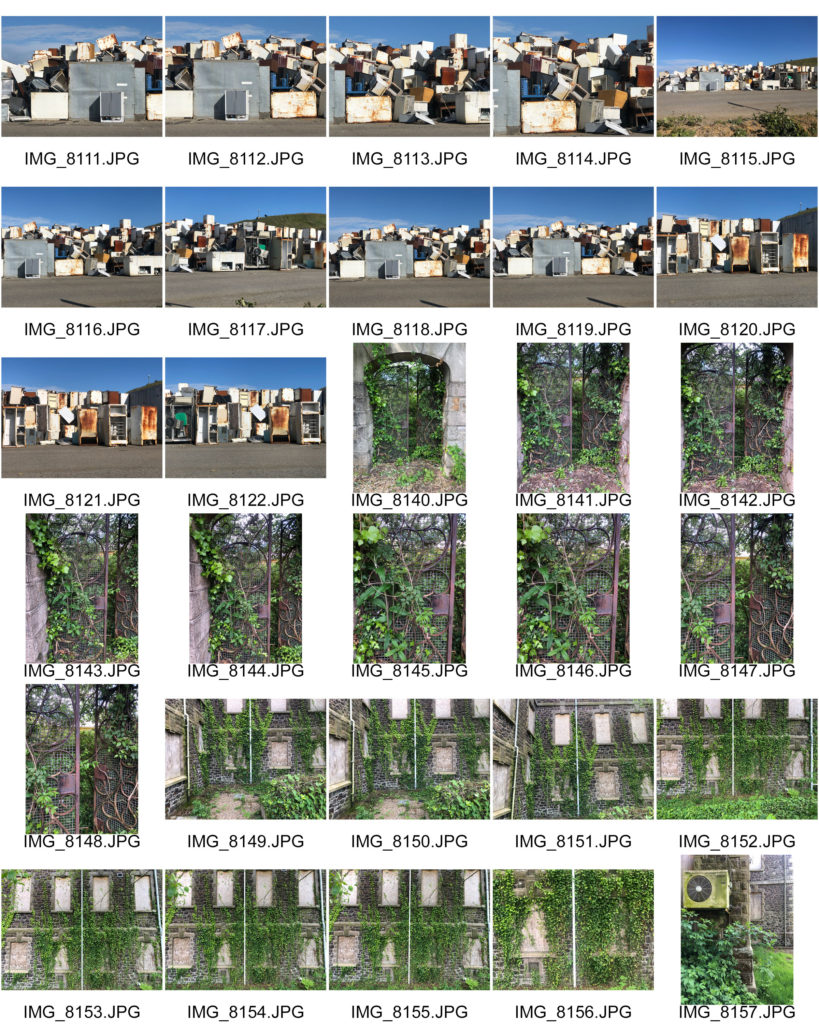

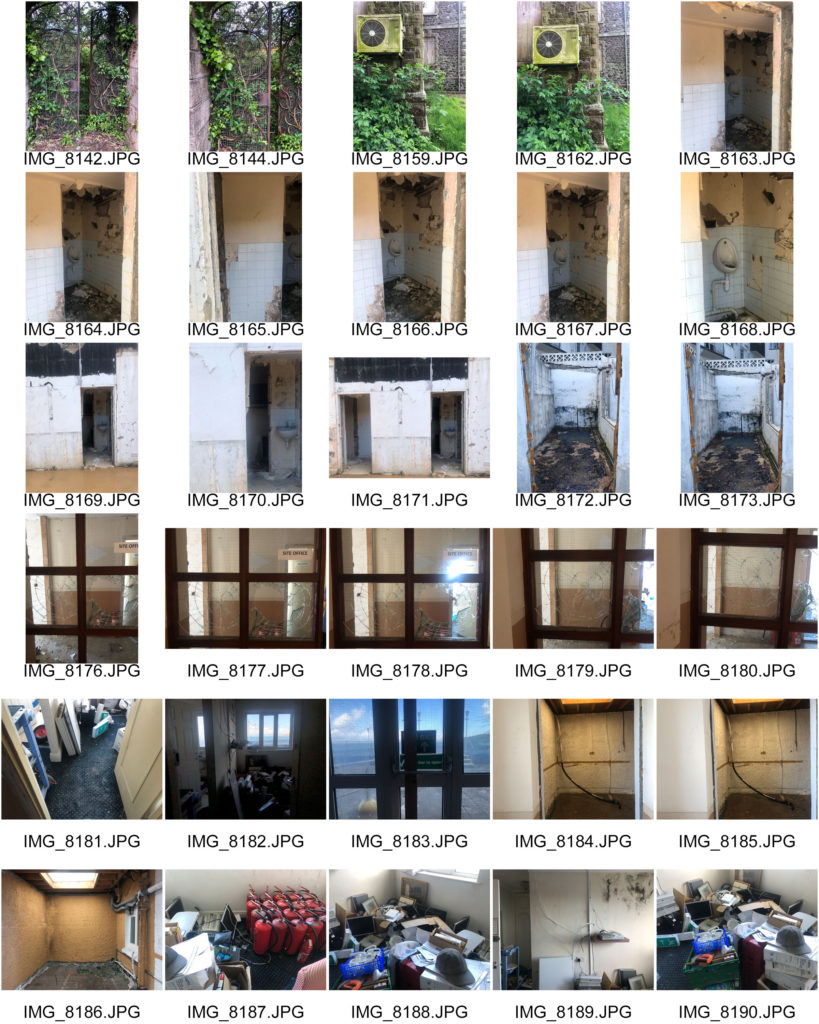
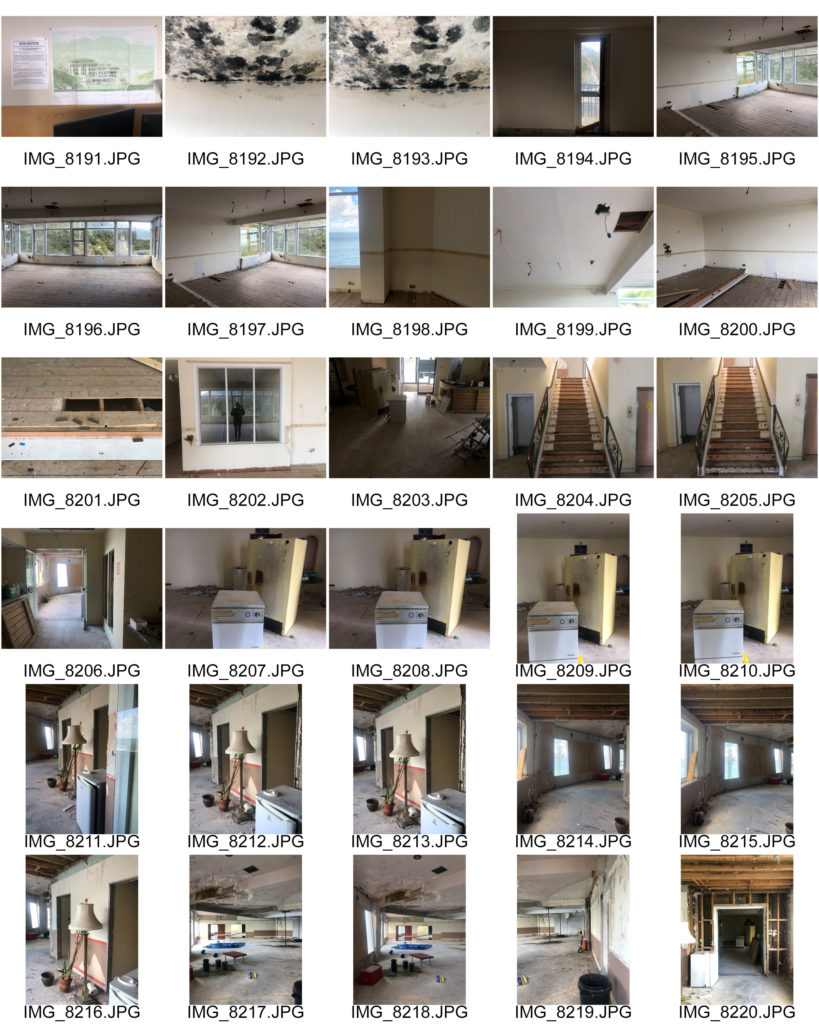
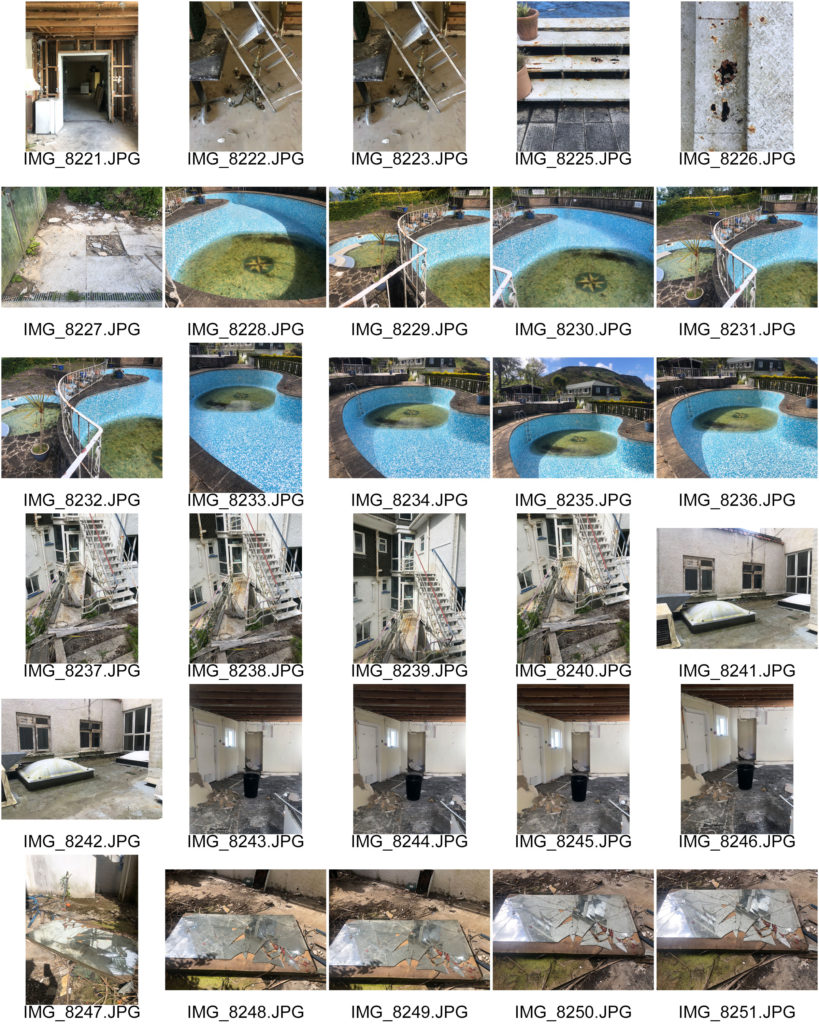
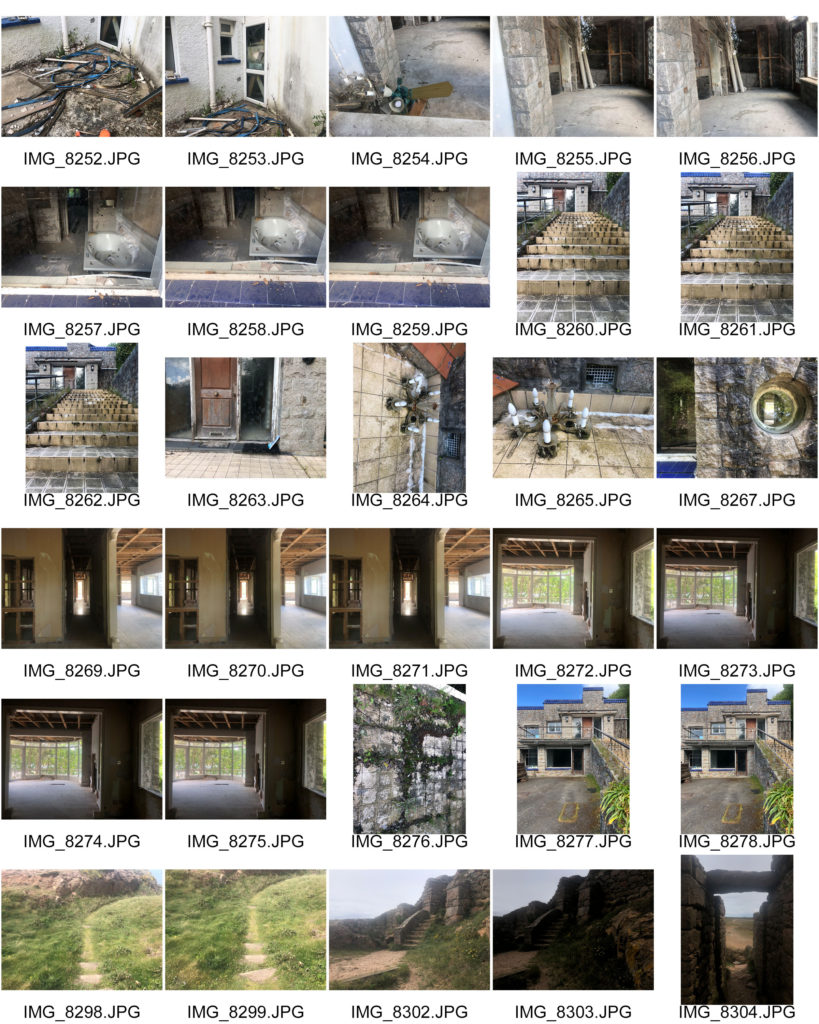
Final Images

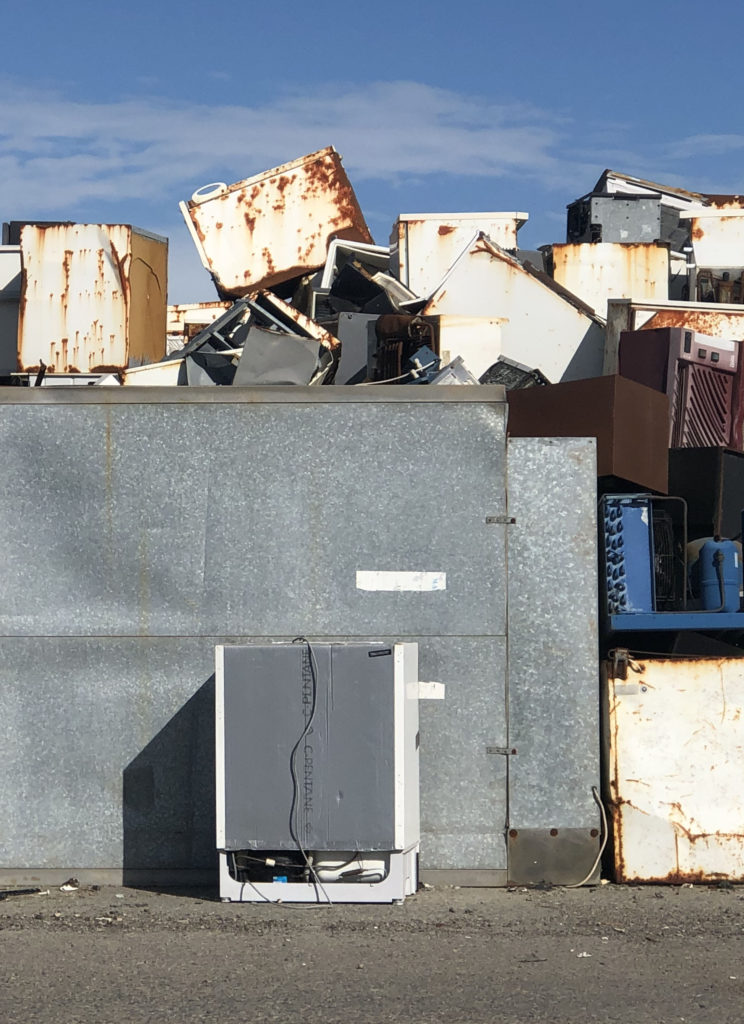
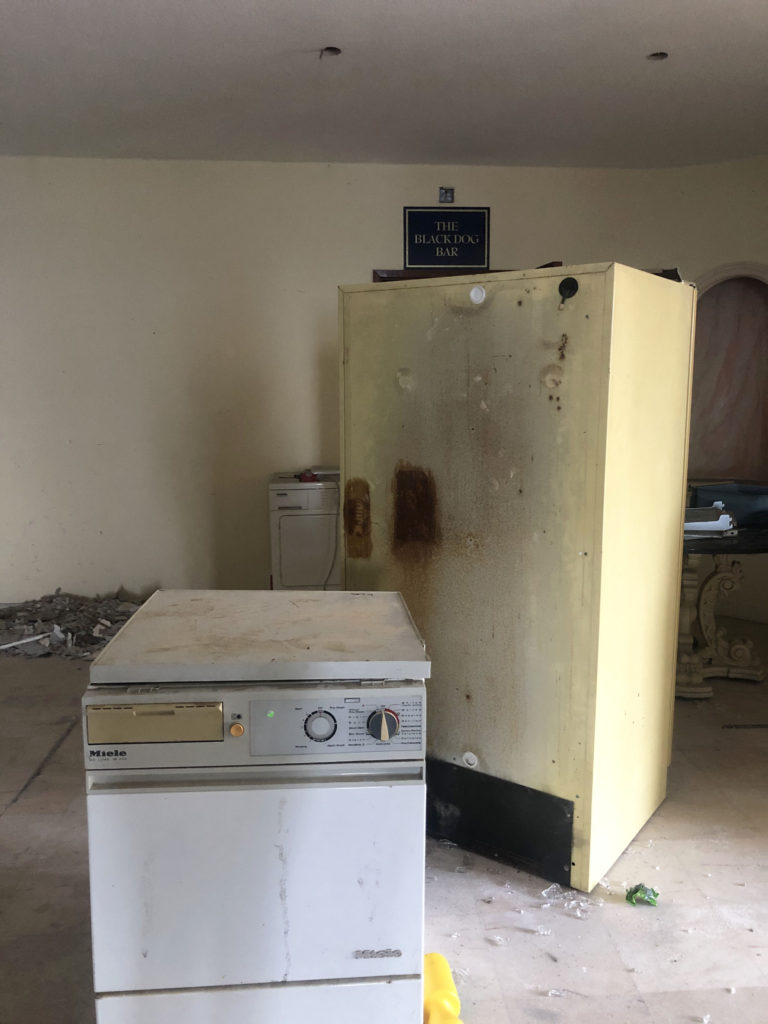
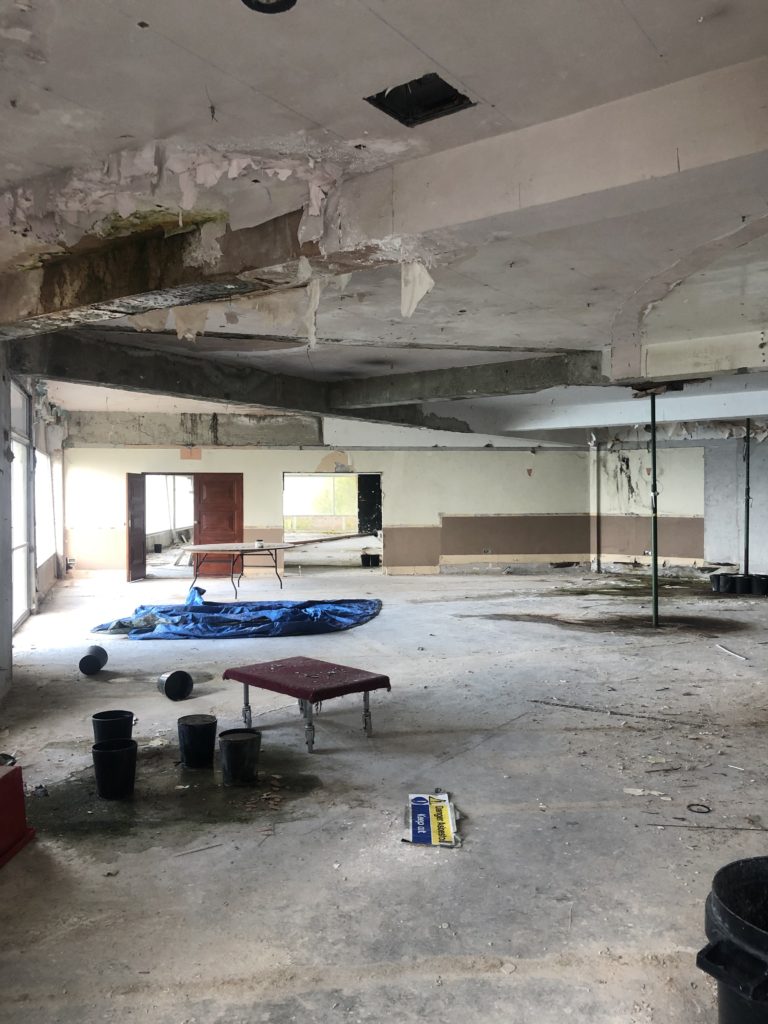
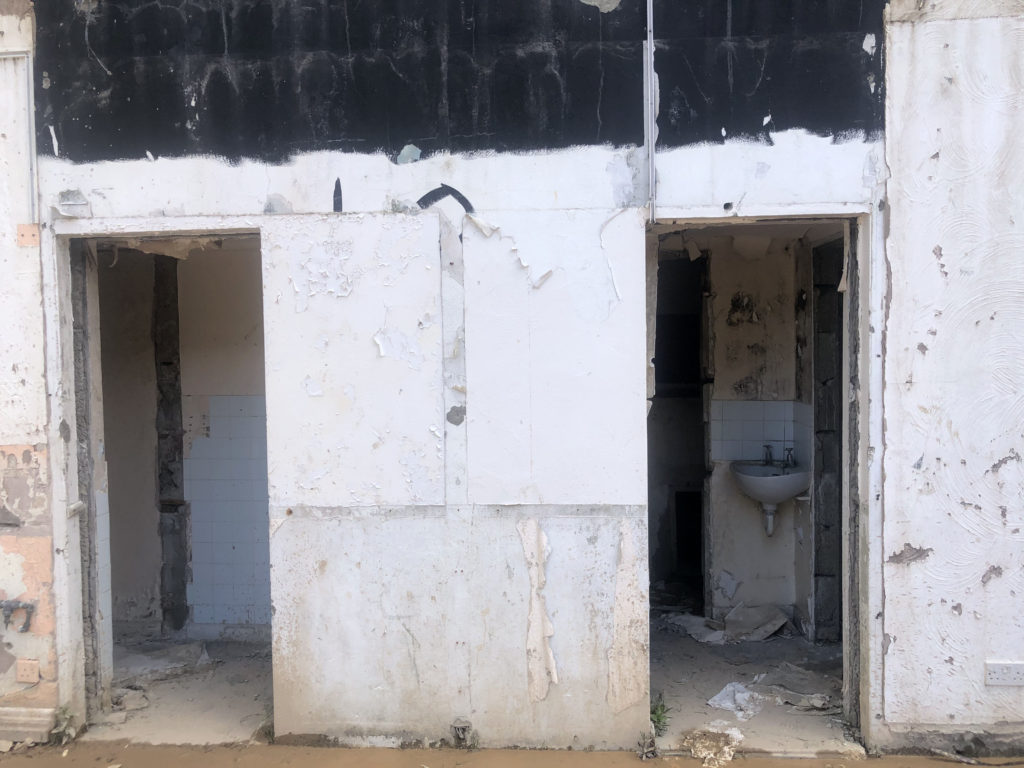
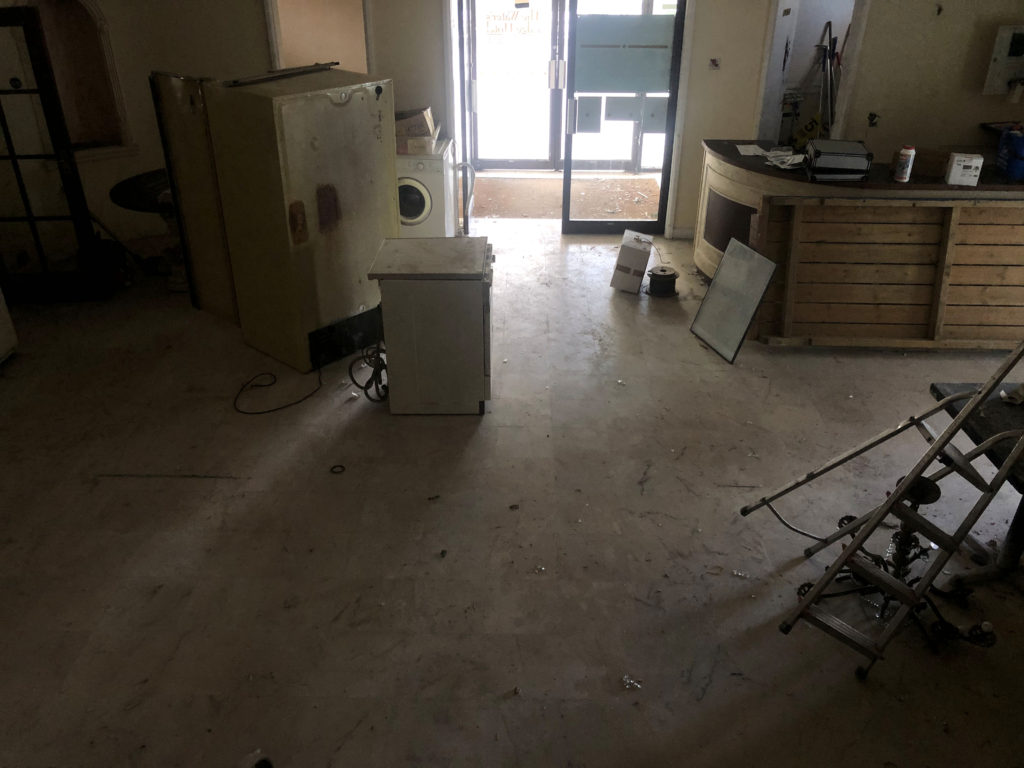
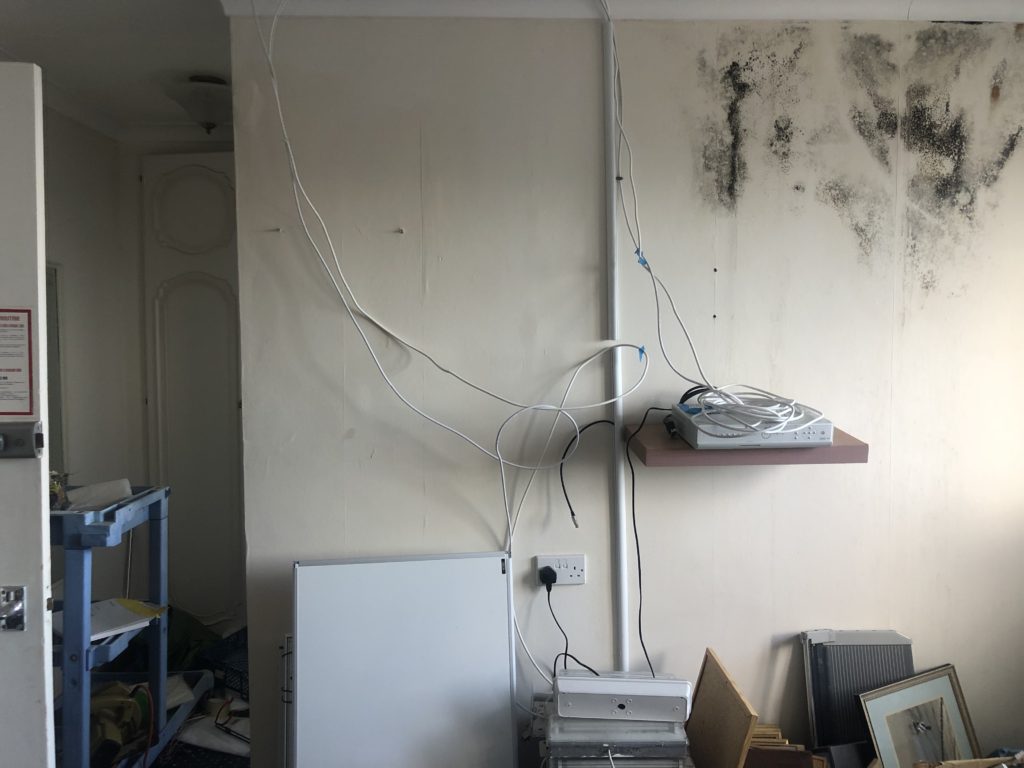
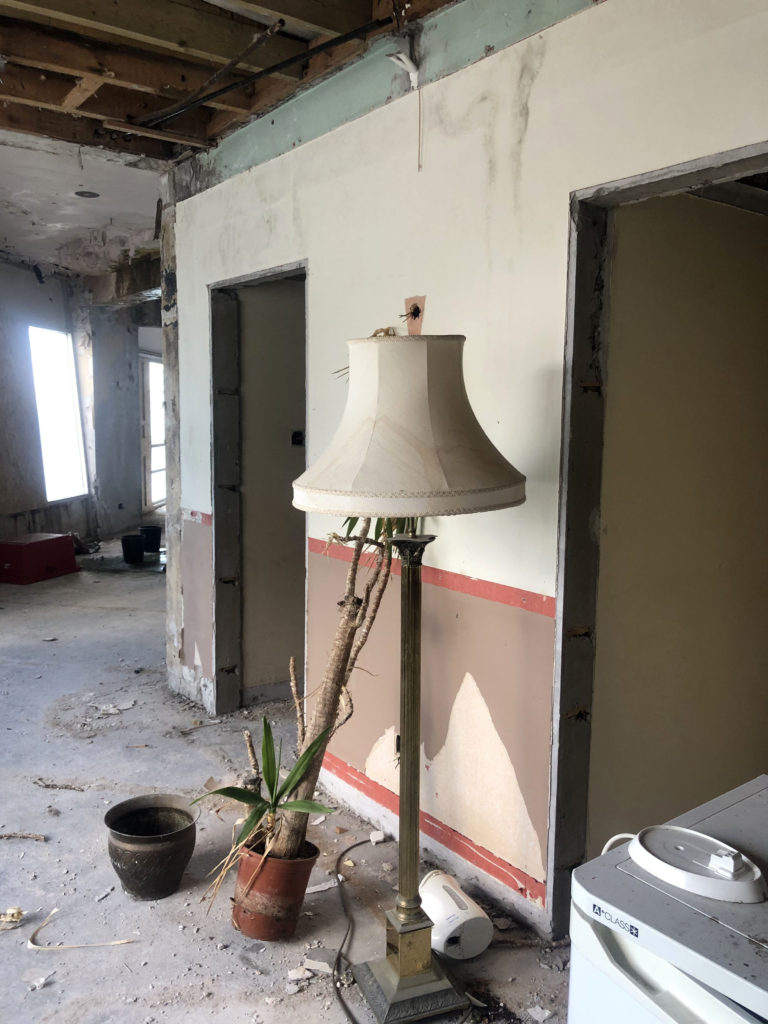
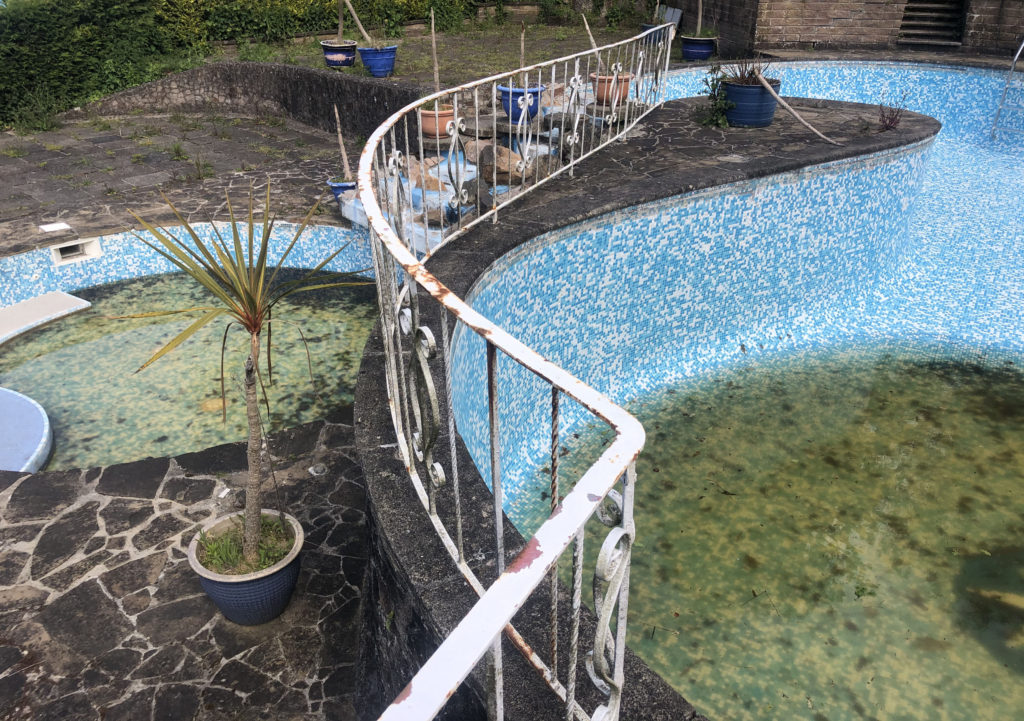

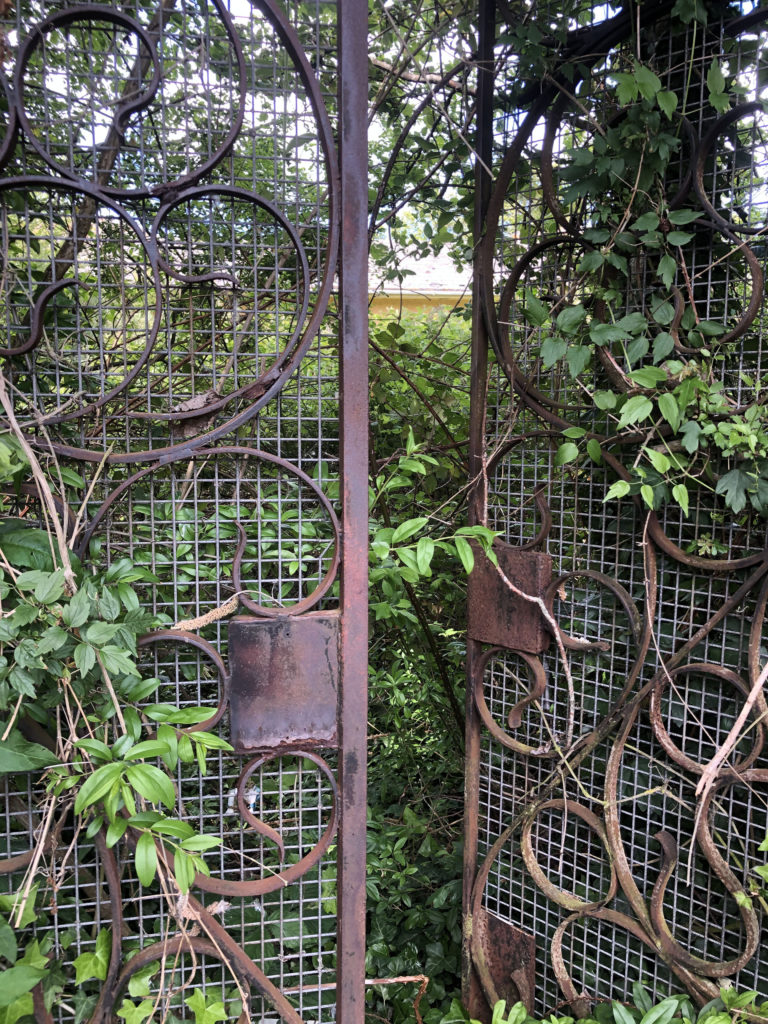
I chose these images as my final images as I believe they best reflect the photographer that I was taking inspiration from and they show Anthropocene well.








Final Images











I chose these images as my final images as I believe they best reflect the photographer that I was taking inspiration from and they show Anthropocene well.
Yves Marchand (born in 1981) and Romain Meffre (born in 1987) are two French photographer who met through a mutual interest in contemporary ruins. They began their collaboration in 2002 by exploring Parisian urban remains before their interest took them to Detroit, where a thorough exploration of the city lasting five years resulted in their seminal work, ‘The ruins of Detroit’. Their other projects after that include ‘Theatres’ where they discovered and documented the sorry state of theatres they came across while travelling around America.
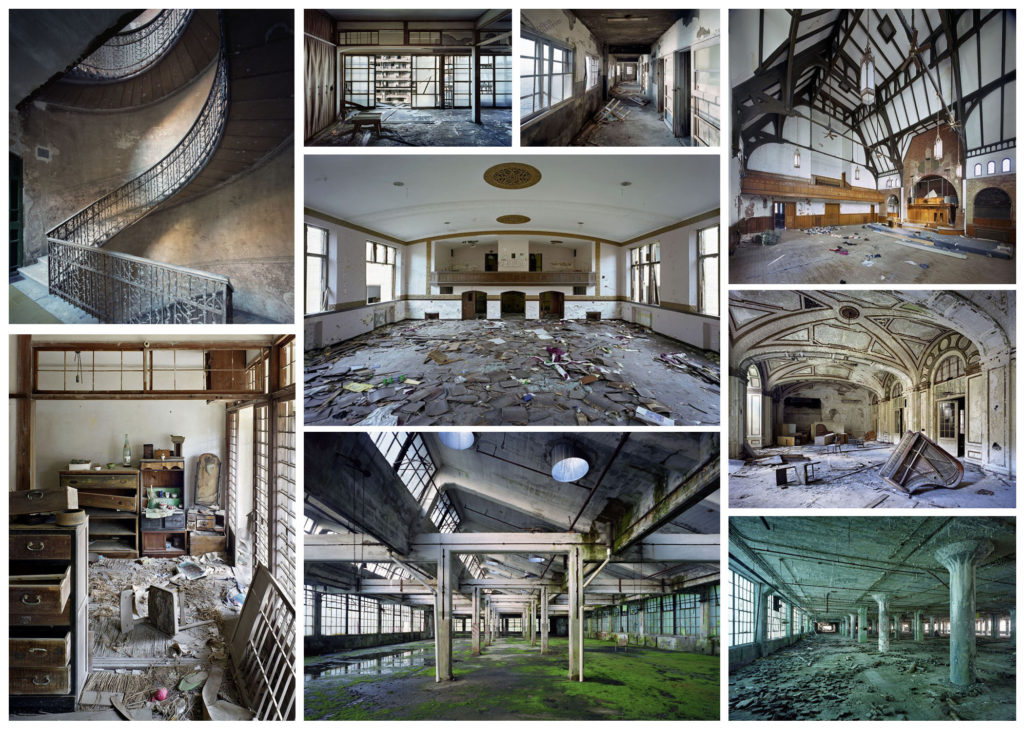
Image Analysis

This image has been taken inside with the natural light coming through the windows. This image is filled with dull colours, mostly neutral tones like beige and creams. I think this image shows Anthropocene well as it shows a building that has been built from wood and such materials that have been sourced from the Earth and then abandoned to rot and ruin the landscape. This has a massive impact on landscapes and the Earth as people are cutting away nature and ruining habitats to build homes and buildings that are abandoned and left to decompose. There are over 19 million vacant buildings in America where the land could have been left untouched. I believe that I may be able to find a vacant building that I can take images of.
Greek photographer, George Marazakis (born in 1976 Creta Island Greece), takes Anthropocene as both concept and title for a series that looks at a new epoch engendered by the greed of mankind. He studied mechanical engineering and works for the Greek Ministry of Justice. In his series ‘A Cure for Anthropocene’ he says that an external observer could describe Anthropocene as an autoimmune disease attacking its own body. However, what it would consider as a disease is our very existence and the cure, the ecological movement, does not aim at the salvation of the planet but at the salvation of human existence on the planet. Humanity’s impact on the Earths geology is so crucial that the 11,650 years old Holocene, the current Geological epoch, is proposed to be replaced by a new one called Anthropocene, from the Greek word ‘anthropos’ for human.

Image Analysis

This image has been taken in natural lighting from what looks to be a slightly raised view that is far away. The image is somewhat dull as the grass is a pale green even where the sun is shining on it and the rest of the background is only filled with white and grey tones. I think this image shows Anthropocene well as it clearly shows a natural landscape of a cliff, however it has a man made math all the way down it as though it has been cut and scarred the landscape. This image is a perfect example of a small portion of humans impact on the Earth as most cliffs now have paths that have been purposely made or have paths that have been made by humans walking the same way constantly and the grass wearing away over time. I believe with Jerseys huge range of cliff path walks I can take images inspired by George Marazakis.
Mood board

Mind Map

What is Anthropocene?
The Anthropocene epoch is an unofficial unit of geological time, used to describe the most recent period in Earth’s history when human activity started to have a significant impact on the Earth’s climate and ecosystems. The word comes from the Greek terms for human and new. The Anthropocene is distinguished as a new period either after, or within the Holocene, the current epoch, which began approximately 10,000 years ago with the end of the last glacial period.
Anthropocene in photography
Anthropocene in photography is a very powerful way of showing the world how we, as humans have changed the Earth and how our actions are impacting the world everyday. This is usually shown in a negative perspective. In photography this can be shown through; landscape, abstract and portrait photography. To tackle this topic we could capture pictures of man made objects such as plastics (e.g. shopping bags, bottles, online shopping packaging) to create awareness of how much plastic and packaging is used where it isn’t necessary and its affect on the planet. In addition to that, if people see the affects on the planet in a more visual way rather than reading about it people may give it more thought as seeing it first hand could have a much greater impact.
Examples of Anthropocene in photography
Landscape approach to Anthropocene

Object approach to Anthropocene

Portraiture approach to Anthropocene

Abstract approach to Anthropocene
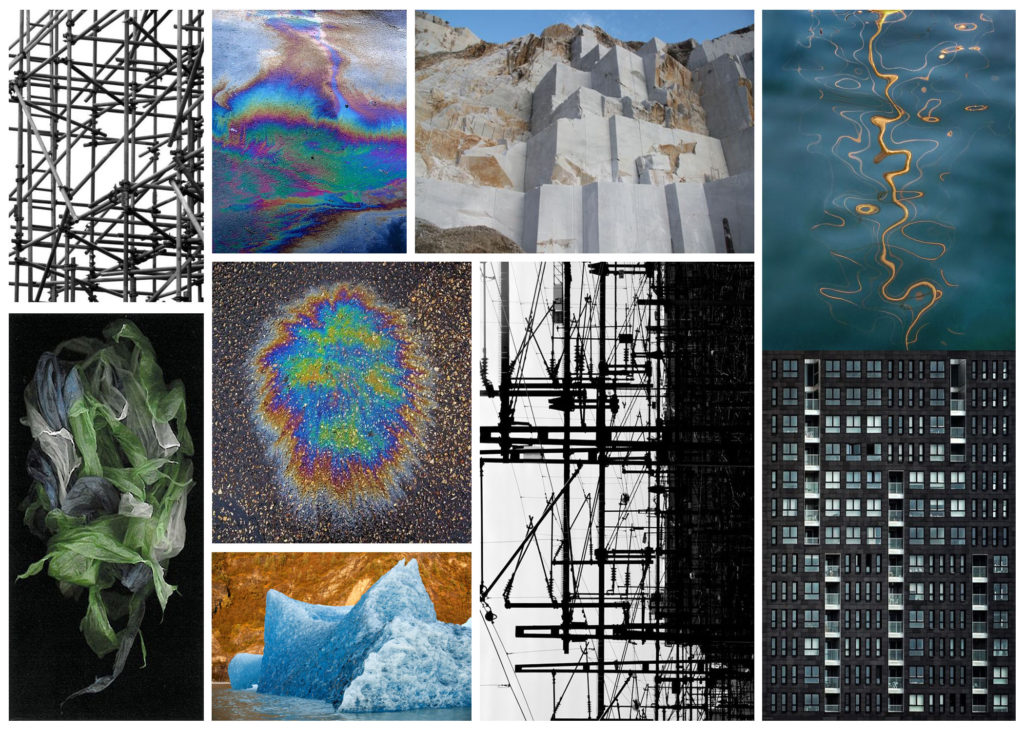
Locations for images
Locations: scrapyards, building sites, cranes, restoration yards, derelict ruins, car parks, underpass, harbours and dockyards, industrial centres, retail parks, stadiums, floodlight arenas, staircases, road systems, pipework, telephone poles, towers, pylons, shop displays, escalators, bars, libraries, theatres and cinemas, gardens, parks, playgrounds, swimming pools etc.
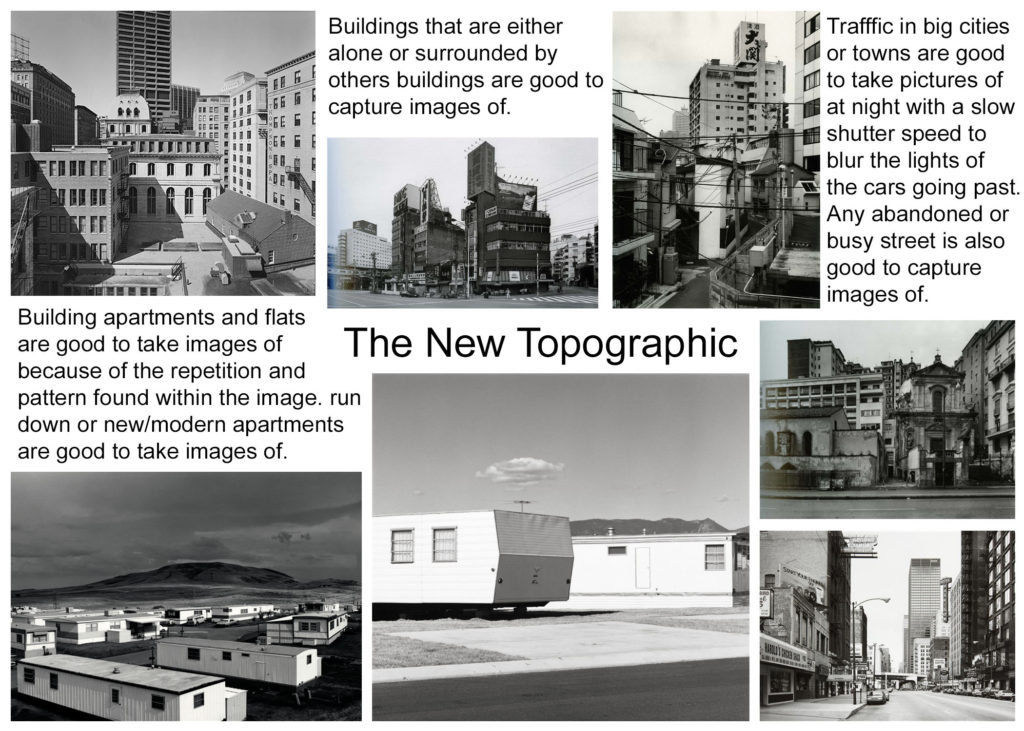
Photoshoot plan

Lewis Baltz (1945-2014) was a young photographer who soon became a central figure in the new topographic movement. Through his investigan on the crisis of technology as a means of human emancipation, the role of the artist and objectivity, Baltz contributed to the aesthetic shift that the exhibition, (New Topographics: Photographs of a Man-Altered Landscape), began provoking among a young generation of (mostly) European photographers. His body of work focused on the search for beauty in bleakness and devastation, a reflection of human control and power through the depiction of common architecture of factories, parking lots,offices etc.

Image Analysis

This image looks to have been taken in natural lighting as the top of the image behind the building is very bright as though there is sunlight behind the building. The contrasting tones in this image imply that it has been edited so that the darker tones contrast the brighter tones even more. This image has also either been taken in black and white or edited after being taken. This image is very sharp, although the image is simple, the way it has been captured brings out all the details; such as the marks on the garage doors and the different tones and marks on the tiles. The floor in this image is the biggest contrast as it is fully black and fully white, where as the rest of the image is just extremely dark grey tones contrasting with lighter grays. I am going to take inspiration from this image as I know a place similar that I can capture images of.
New topographics was a term coined by William Jenkins in 1975 to describe a group of American photographers (such as Robert Adams and Lewis Baltz) whose pictures had a similar banal aesthetic, in that they were formal, mostly black and white prints of the urban landscape. Many of the photographers associated with new topographics including Robert Adams, Lewis Baltz, Nicholas Nixon and Bernd and Hiller Becher, were inspired by the man-made, selecting subject matter that was matter-of-fact. Parking lots, suburban housing and warehouses were all depicted with a beautiful stark austerity, almost in the way early photographers documented the natural landscape.
Mood Board
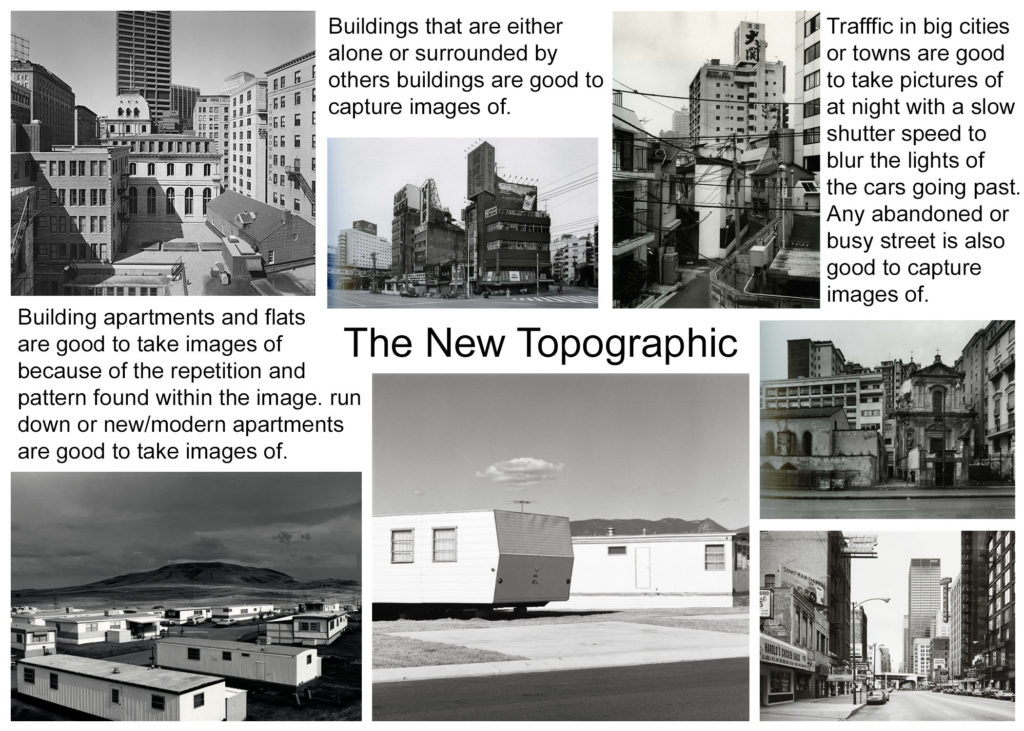
What was the new topographics a reaction to?
Their stark, beautifully printed images of this mundane but oddly fascinating topography was both a reflection of the increasingly suburbanised world around them, and a reaction to the tyranny of idealized landscape photography that elevated the natural and the elemental. The new topographics was a reaction to the urbanization of natural landscapes.
Industrial landscapes are all over the place. In fact, they’re so common, we often forget these construction sites, power plants, chimneys, and factories. can be extremely interesting photography subjects. Truth be told, industrial landscapes are rising in natural habitats and urban areas, changing the face of the Earth. They have intriguing materials, textures, and colours, and unique geometrical shapes. All photographers should practice seeing art in the common and mundane.
Mood Board

Mind Map

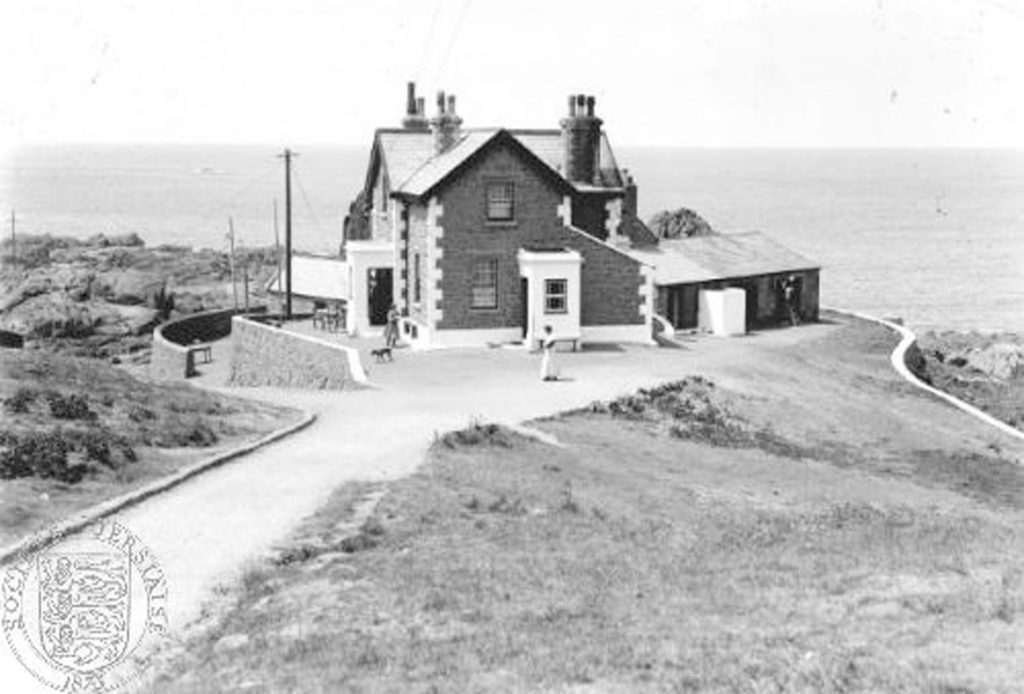
This image was taken by Edwin Dale of La Corbiere lightkeepers house with two ladies outside, a dog, a cat and a man on a ladder repairing gutters on the outbuilding.
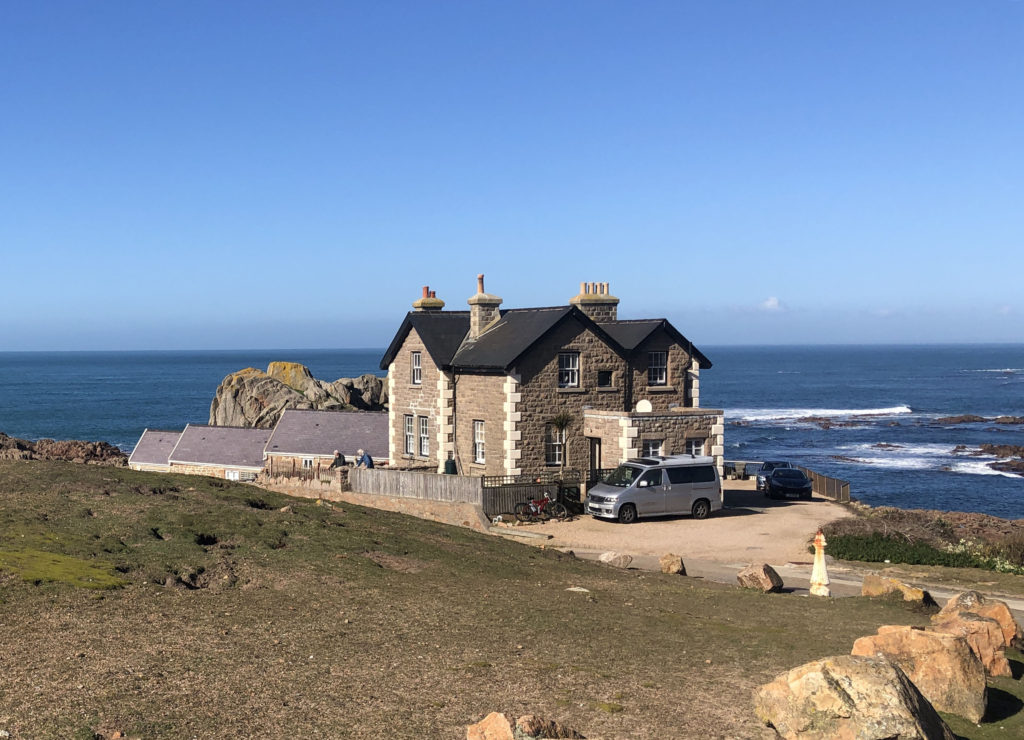
Juxtaposing the images

To create this image I found a photograph that I had taken and liked of this house at Corbiere and then searched in the Jersey Photo Archives for a similar photograph. I then opened both images on photoshop, lined them up with my image on top and cut out squares using the rectangular marquee tool.